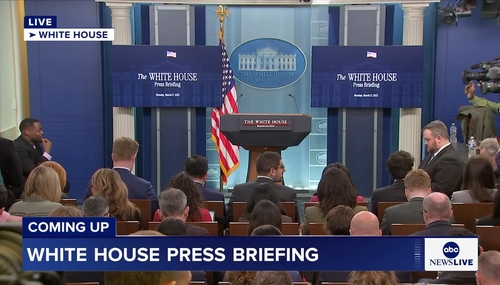Editor's Note: The following review, by NewsBusters publisher Brent Bozell, appeared in the September 13 edition of the Washington Times.
I lost my television debate virginity to Tom Braden, the old curmudgeon liberal counterpart to Pat Buchanan, on the original CNN“Crossfire” series. His first question was a haymaker: “Who the hell do you think you are passing judgment on journalists?” he snarled. Little did I know this was the official Denial Excuse No. 12 in an endless litany of media denials of what everyone knows, but only they continue to deny: The “news” media are drowning in a liberal political bias.
Enter into the fray UCLA professor Tim Groseclose with “Left Turn: How Liberal Media Bias Distorts the American Mind,” with a new methodology to measure that bias.

Mr. Groseclose argues that one can measure liberal media bias through objective and quantitative statistical analysis, that “every [emphasis his] mainstream national news outlet in the United States has a liberal bias,” that out of more than 100 major news outlets studied, only a handful lean to the right and none of the supposedly conservative news outlets is far right.
There is a whole lot of math going on here, and some of the statistical jargon is pure mumbo-jumbo that the layman just must accept, (“To find the pseudo intercept rendezvous parameters b, k and the radial distance d between circular orbits,” “endogeneity problems” and the like), so out of necessity, I will simplify (and the author might well accuse me of oversimplifying). Mr. Groseclose first introduces us to the “PQ” analysis, the “political quotient” that measures the degree to which a person is liberal.
Mr. Groseclose measures the PQs of members of Congress by studying their roll-call votes; for others, he offers a self-testing series of questions. Rep. Michele Bachmann (minus 4.1) and Sen. Jim DeMint (4.8) are on one end and Rep. Barney Frank (103.8) and Ronald V. Dellums (107.4) fall on the other. Next, the author conducts the “SQ” analysis, measuring the “slant quotient” of media outlets based on their source material, i.e., which policy think tanks they turn to for their citations. Thus, the author concludes that the New York Times has a 74 SQ, on par with the 74 PQ of Sen. Joe Lieberman, Connecticut independent.
Later in the book, Mr. Groseclose introduces another measuring device, estimating the bias based on an analysis of the facts reported about certain issues, when there are facts supporting both the liberal and conservative positions.
From there, the author documents how this bias manifests itself, revisiting some fields well-tilled by others but with fresh applications. It explains the bias of omission and the dearth of stories of interest to conservatives. It explains why liberals can’t dismiss independent studies showing their domination of the newsrooms. It explains the use of language (i.e., “so-called partial-birth abortion”), the slant in issue coverage (Bush tax cuts equal tax cuts for the greedy rich), and in one fascinating section, the author explores what might be the political impact on the nation if the bias came in equal intensity - but from the right.
It’s worth buying the book just to read this part.
There’s much to like about this book. There is Mr. Groseclose’s fierce intellectual honesty: He makes no bones about his own political biases. There is a certain modesty in his work: He continuously submits his theories to peer review, even when his peers’ politics veer sharply from his own. Finally, when his conclusions generally track so neatly with those arrived at through the use of more traditional methodologies, who can argue?
Liberals, that’s who, and it’s Mr. Groseclose who provides them with the ammunition in his premise. Just as there is no such thing as purely objective news, there is no purely objective way to measure news bias. It can walk, talk and quack like a liberal, but it is far too complex an animal to reduce to quantitative mathematical formulations. It also requires qualitative analysis, which math cannot provide.
Which roll-call votes were used to determine legislators’ biases and who determines where each vote falls on the ideological playing field? Even if I agree entirely with Mr. Groseclose’s views (and I probably do nine times out of 10), that makes us both ideologically prescient, not mathematically correct. It matters not that a news organization quotes a public policy group. What if it was an attack on that group’s position? Did Mr. Groseclose study the context of every citation to determine the SQ of Newsweek? Ditto his analysis of facts reported - were the facts reported or criticized?
A conservative also will find faults. Mr. Groseclose labels Mr. DeMint “far right.” It can be argued that Ronald Reagan’s positions were even more conservative than Mr. DeMint‘s. What would that make the Gipper? The author cites ABC’s Charles Gibson as “nothing but fair and centrist in my judgment ABC’s Good Morning America, during his tenure, was approximately the most unbiased of all U.S. media outlets.”
Mr. Gibson was no Keith Olbermann, to be sure; but I can provide dozens of examples documenting that he was no centrist, either. In perhaps the biggest head-scratcher, Mr. Groseclose declares that the conservative bias of Fox News’ “Special Report” is equal to the liberal bias of ABC’s “World News Tonight” or NBC’s “Nightly News.” That is simply untrue across the board, be it a measurement based on story selection, labeling, placement, sourcing, spokesmen or time.
Still, I like the book and recommend it. It will drive the next generation of Tom Bradens wild. It’s guaranteed they will dismiss the PQ and SQ analysis PDQ, which means Mr. Groseclose is on to something.




